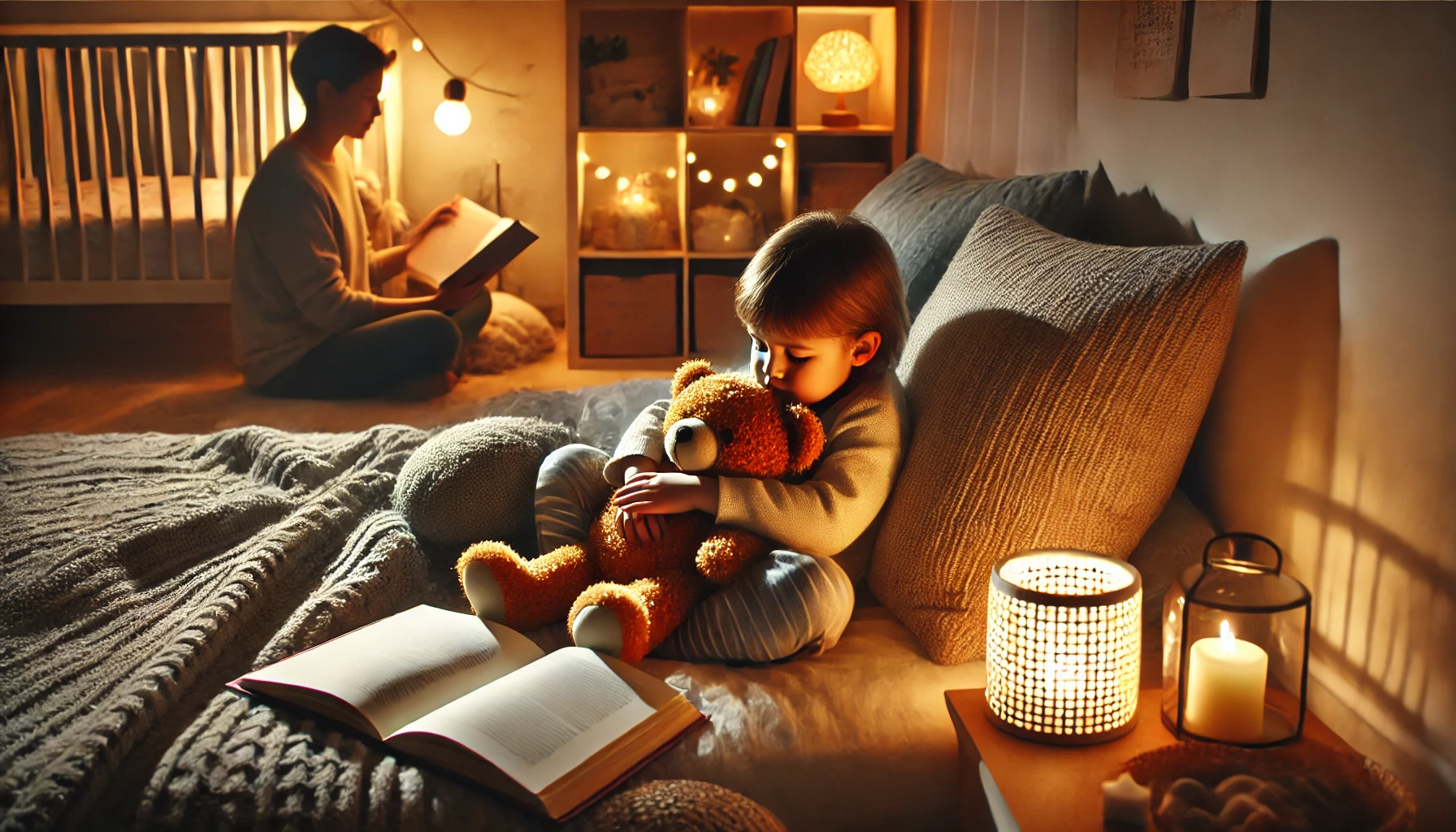Rest and sleep are essential for a young child’s physical, emotional, and cognitive development. But getting kids to understand and embrace rest time isn’t always easy—especially when they’d rather be playing. Teaching children why rest matters, and helping them develop consistent, calming routines, sets the foundation for healthy sleep habits that will support them throughout their lives.
Why Sleep and Rest Are Crucial for Young Children
- Supports brain development and memory
- Boosts immunity and physical growth
- Regulates mood and reduces emotional outbursts
- Improves focus, attention, and learning
- Creates energy for play and exploration
1. Explain What Sleep Does for the Body
Help kids understand how rest helps them feel good and grow strong.
Activity Idea:
- Say: “Sleep is when your body and brain get stronger and smarter!”
- Use simple comparisons: “Sleep recharges you like a battery.”
- Show pictures of animals sleeping and explain why all living things need rest.
What Kids Learn:
- That sleep is active rest—not just “nothing.”
- The role of sleep in growth, energy, and learning.
- How sleep supports the activities they love.
2. Build a Predictable Bedtime Routine
Consistency helps kids settle down and feel safe at night.
Activity Idea:
- Create a bedtime routine with 3–5 simple steps: bath → pajamas → story → lights out.
- Use a picture chart so your child can follow along.
- Stick to the same schedule, even on weekends.
What Kids Learn:
- That bedtime isn’t a surprise—it’s part of their rhythm.
- How to mentally and physically prepare for sleep.
- Comfort through routine and predictability.
3. Make the Sleep Space Cozy and Calming
Environment plays a big role in sleep success.
Activity Idea:
- Use dim lighting, soft blankets, and their favorite stuffed animal.
- Play calming music or white noise if it helps.
- Keep the bedroom screen-free and quiet.
What Kids Learn:
- That certain cues mean “it’s time to rest.”
- How to feel safe and relaxed in their sleep space.
- That their sleep area is special and peaceful.
4. Use Stories and Play to Introduce Sleep Concepts
Children learn best through storytelling and imagination.
Activity Idea:
- Read bedtime books like Goodnight Moon or Time for Bed.
- Let your child “put their toys to sleep” as part of the routine.
- Make up a bedtime story where the hero gets stronger because they rested well.
What Kids Learn:
- That rest is a shared human and animal experience.
- That sleep can be linked to fun and love.
- New vocabulary and emotional comfort through story.
5. Encourage Wind-Down Activities Before Bed
Calming transitions are key to better sleep.
Activity Idea:
- Turn off bright lights and screens 30–60 minutes before bedtime.
- Offer quiet play, reading, or puzzles instead.
- Try gentle stretches or breathing exercises: “Let’s take 3 slow dragon breaths.”
What Kids Learn:
- How to shift from play mode to rest mode.
- The value of calming the body and mind.
- That bedtime doesn’t have to be a struggle.
6. Talk About Feelings Around Sleep
Some kids resist sleep due to fear, worry, or separation.
Activity Idea:
- Ask: “Is there anything about bedtime that feels hard or scary?”
- Offer comfort: “I’ll be right nearby,” or “You’re safe and loved.”
- Use a bedtime journal or draw pictures about dreams and feelings.
What Kids Learn:
- That it’s okay to have feelings about rest.
- How to name and talk about those feelings.
- That caregivers are always there for support.
7. Reinforce the Benefits of a Good Night’s Sleep
Celebrate rest as a positive, empowering experience.
Activity Idea:
- In the morning, reflect: “How did your body feel after sleeping?”
- Highlight wins: “You had so much energy today after your nap!”
- Keep a simple sleep chart or sticker system to show consistency.
What Kids Learn:
- That they control how they feel through rest.
- Motivation through positive feedback.
- A sense of pride in healthy choices.
8. Be Patient and Consistent
Building sleep habits takes time—but it pays off.
Activity Idea:
- When kids resist, calmly return to the routine without negotiating.
- Keep nap times and bedtimes consistent, even when they seem “not tired.”
- Use gentle redirection and soft voices at night.
What Kids Learn:
- That caregivers are calm, consistent, and trustworthy.
- How habits form through repetition.
- That sleep is a gift, not a punishment.
Final Thoughts
Teaching young children about the importance of rest and sleep helps them develop healthy rhythms that benefit their whole life. With calming routines, safe sleep spaces, and positive conversations, kids can learn to value rest as a source of strength, not something to resist. When we honor their need for sleep, we help them grow into healthy, happy, and well-rested individuals.
